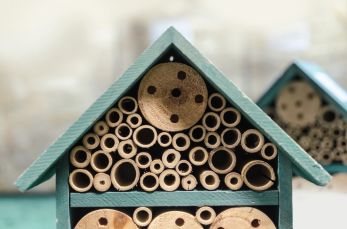
We all know that biodiversity is a good thing, but what does it actually mean? Well, essentially, it’s the variety of plants and animals found in an area. A biodiverse garden can contain an astonishing number of different forms of life, from bacteria, fungi, worms and insects to small mammals, birds, and of course, plants.
This is great news for gardeners, ensuring plenty of natural predators to keep our gardens free of pests, as well as pollinators to give us good harvests. But it’s not just about us. Increasing the biodiversity of our gardens also helps support species in trouble, such as declining insect and bird populations, especially in urban areas. There are plenty of ways to make your garden more biodiverse, and here are our top tips.
8 ways to make your garden biodiverse
-
Plant flowers for pollinators. If you have space, try to have something in flower most of the year. Ivy and mahonia are good in late autumn and winter, and crocuses provide early spring food for pollinators. Avoid double flowers where possible, as insects find it hard to reach their centres and gather pollen.
-
Plant berry-bearing trees and shrubs like holly, hawthorn and crab apple to provide food for birds and protection against predators. Mature ivy scores again here, providing late autumn food for both birds and bees, as well as winter shelter for a whole host of garden creatures.
-
Add water to your garden. You don’t need a huge amount of space for this – even a mini-pond made out of a large pot will attract birds and insects to drink. In larger ponds, if you’re lucky you may get frogs, which will help reduce the slug population. Don’t add fish to your pond, as they’ll eat everything else, but do provide some rocks or a slope so that visiting wildlife can get in and out of the pond.
-
Make a log pile. These are great for invertebrates i.e. insects, worms and other assorted creepy crawlies. Dappled shade is the best location for log piles, with a bit of sunshine for warmth but not enough to dry the wood out completely. Stag beetles love log piles.
-
Put up a bird feeder and birdbath, and keep them both topped up all year round.
-
Don’t cut all your perennials down in autumn. Leave a few hollow dead stems standing to provide somewhere for insects to overwinter. Cut them back once the weather warms up in spring and insects start to emerge again.
-
Learn to love weeds. Dandelions are an excellent early nectar source for pollinators and nettles provide food for the larvae of many moths and butterflies, so leave a few to grow in a corner of your garden.
-
Avoid using pesticides, and let natural predators control your garden pests instead.
Every little helps when you’re trying to improve your garden’s biodiversity. Whether you’re after pollinator-friendly plants, bird feeders or hedgehog houses, visit our centre to find everything you need.

